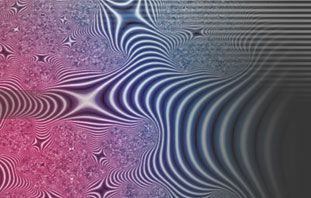 |
 |
|||||||
 |
||||||||
|
How does Eric Berne's Transactional Analysis
approach relate to Spiral Dynamics and
Gravesian theory? Transactional Analysis (TA) is a wonderful complement to SD and EC (Graves's emergent cyclical) theory because it clarifies the affect component and some key personality and temperament variables. TA provides a useful model for exploring relationships and interpersonal dynamics, and the TA approach can even be applied in organizations, much as SD is applicable at the individual, group, and societal levels. Eric Berne was a psychiatrist and psychotherapist. His popular book, Games People Play, and his last book, What Do You Say After You Say Hello?, set the tone for his social psychology, TA. Derivative works came from Thomas Harris with I'm OK, You're OK and Muriel James whose Born to Win also elaborates and applies the model. While Graves was probably well aware of Berne (and Harris's very popular application ), he doesn't cite them, perhaps because his work in development had moved away from therapeutic models and personal growth approaches. Graves was focusing on development in terms of stages, and Berne's work was rooted in behavioral differences at a level. So Berne would fall more in the area of temperament aspects of personality and relational issues, whereas Graves was trying for the deeper systems in which temperament resides and on which the relationships Berne describes rest. Both are useful. Berne's work is group-oriented and focused on observing behavior through the lens of interpersonal and social dynamics as people shift ego states. He also describes transactions, strokes, games, scripts, and contracts for facilitating positive change built around them. Ego states (parent, adult, and child) are interacting packages of feelings, ideas, and actions which set a tone for personality as the person engages them, most easily recognized in a social dynamic. The transaction that results is the central unit of interpersonal communication and the vehicle for analysis via ego states and their patterns of interactions within and between people. In a dysfunctional, growth-limiting form, the transaction becomes a game; and these psychological games can become an ongoing lifestyle in themselves. Along with a description of basic principles, Berne identified some common games and their patterns of dysfunction in his first best-selling book, thus the title. In TA language, a stroke is a unit of interpersonal recognition and can be positive or negative (a discount). Teaching healthier, more supportive ways of giving interpersonal strokes is an aim of TA practice in coaching and teaching, parenting, and therapy. TA scripts are formed in childhood and become patterns of behavior and relationships played out for life. These can be self-limiting decisions which continue to arise and impact future choices negatively. If they are profound, scripted instructions might well remain embedded even as the person moves through Gravesian levels, playing out in varying ways. One of the goals of TA in psychotherapy is to recognize and revise scripts and their consequences. Therapy to revise scripts would benefit from recognition of the SD level involved. A key aspect of therapeutic growth is recognizing and revising these scripted patterns. For Graves, the emergence of each level subsumes previous systems without erasing prior experience, though possibly reframing it. In a sense, a change in Gravesian levels potentially rewrites pre-existing scripts to new versions which must then be dealt with in an appropriate way for that level to the extent they still have impact. This sort of transformation would be both significant and challenging for both helper and helpee. SD/ Graves speaks of levels of psychological existence—biopsychosocial systems in an emergent hierarchy. There is not an equivalent for ego states within the Graves model, although ego states clearly play out within and among the levels as people interact. Thus, the parent, adult, and child (with their subsets) exist in particularizable forms for BO, CP, DQ, etc. (Perhaps in limited versions for AN, though that is open to debate.) Graves's concept of schema (particular manifestations of systems in persons in context) is closer to Berne's life scripts. For example, in DQ the nurturing parent and controlling parent represent stylistic differences. These are often confused with systems differences and the nurturance attributed to FS. Similarly, the controlling parent side of FS can be falsely ascribed to DQ. The adaptive child in ER is similar to aspects of CP, yet the underlying systems are quite different in cognitive complexity, ability to sensate guilt, and intention. Some of the confusions which occur with the SD community could be greatly clarified with an understanding of Eric Berne's differentiation of ego states, transactions, and games. The tendency to collapse everything into simplistic typology or faux unity would be reduced if more practitioners had a grasp of TA principles. Finally, the contract is an agreement to work on positive change made between a helper and helpee from the view that people are capable of deciding to live for-better rather than for-worse. The interpersonal dynamics are central to TA interventions, just as many TA oberrvations are best made in a group context. There are some significant differences between these two perspectives. Gravesian levels are more elaborated systems and worldviews, with EC theory's thema being both broader and deeper categories than what Berne describes as ego states and scripts. At the same time, ego states offer some useful distinctions of personality elements which are not embedded in SD, as well as a language for analyzing their interplay in transactions and games. TA does not really propose a developmental hierarchy or sequence for change in terms of many dimensions which Graves considered important. It is a change-oriented model, but one more oriented toward change to better functionality and psychological well-being than transformation. Graves, on the other hand, is first and foremost a model for understanding and an explanatory theory around which to organize actions, and then a model for change when and if appropriate. There are no steps and stages in the TA model, one reason it is relatively 'safe' and non-threatening. Instead, it seeks to foster movement from dysfunction to healthier living and a break with pathology to more effective adjustive behavior. In some respects, the goal is to enhance 'maturity' at a level and to improve coping strategies in that context. In the Gravesian theory, that change in behavior might alter either Helix I or Helix II sufficiently to contribute to a shift in levels if change is to be. While SD is first a tool for differentiation so as to design appropriate interventions and apply the most effective tools, it is also a sequential framework marked by increases in degrees of behavioral freedom and cognitive complexity through the systems. When abused, it becomes a weapon for sorting people on narrow dimensions. Strokes take on unique forms and expressions with Gravesian levels, appropriate to those levels. These units of interpersonal recognition—either positive or negative—are meme carriers working within vMeme contexts. The response to the transferred meme (or basket of memes) is an indicator of level of existence, as well as of ego states. The meaning attributed to a stroke is a function of the perceptual system activated at a Gravesian level. This is why doing the same thing can be taken in very different ways with different results. This is a place where understanding Gravesian systems can contribute markedly to practitioners of TA. TA identifies three basic types of transactions between people (and their ego states): complementary (balanced), crossed (with sup-types), and ulterior (duplex). While a discussion of these is beyond the scope of this commentary and widely available online and in the TA literature, note that attempts to make parallel the interaction of ego states with the interplay of personalities functioning at different Gravesian levels is problematic. To do so is to conflate the contents with the container rather than taking both into account at once. A transaction between centralized DQ and DQ might be complementary and balanced or conflicted and bellicose, depending on beliefs and memes involved. A transaction DQ to ER might be angry or collaborative, depending on the purpose of the interaction and the characters involved. An overt ER to ER transaction with an ulterior Parent/Child element is confounding—common on The Apprentice—just as a veneer of A'N' Yellow-speak painted over a set of DQ or ER premises is deceptive, and often effective with the gullible. A crossed transaction in TA terms which also crosses Gravesian levels is an explosive thing. At the same time, balanced ego states tapping different Graves levels (controlling parent Blue to controlling parent Green, for example) might produce conflict which can be framed as a values-based differences, or surprising collaboration framed as common ground. This phenomenon has produced a great deal of buzz because it's been so misunderstood as authoritarians clash for and against dogma. Others are the confusion of adapted child behavior with CP, nurturing parent with FS, and adult with A'N'. Bridging across the models to relate ego states to Gravesian levels appears easy at the superficial level: parent—DQ, BO/FS; adult—GT, perhaps ER; and child— BO/CP, ER, GT? But that's also to do a disservice to the complexity of both models since it relies on stereotypes rather than substance and fails to differentiate among the expressions in both. For example, the 'controlling parent' takes a different form at different levels; the adapted child plays out in various ways; the adult might simply be the full use of the neurobiological resources available to the person in context with appropriate emotions. Sometimes, emotional muting is confused with the Adult ego state. There is an inner/outer focus shift in Berne's approach, as well as Graves's, between attention to input from the external and adaptation of our internal being to it. For Berne, it differentiates ego states. For Graves, it is the cyclic engine which helps to drive the emergent process of new systems' awakenings. Berne warned of unconscious, uncompromising internal drivers that sometimes grab people: Hurry up; Be perfect; Please people; Try hard; and Be strong. He warned that these can become compulsions. There is some relationship between these and several vMemes. (Recall that Graves proposed one of the transitional elements from subsistence to being levels to be a break with compulsiveness.) The analytical challenge would be to ask why it is a driver, and what the form of and energy behind its drive is. For example, "hurry up" sounds very ER, but it could be in compliance to dictates of authority—"Can't you people hurry up?!" Or to solve a pressing social problem—"We must solve the HIV crisis and stop delaying while profiteers in the drug business kill people." Likewise, to try hard can be operationalized in different ways at different levels, for different reasons. To please people sounds very sacrifice-self (cool colors) and affiliation oriented, but it can also be an adaptive mechanism for obedience, a manipulative strategy for ER (please important people), a survival strategy for CP in a submissive mode or BO trying to fit within the group. Thus, a one-to-one correlation would be very difficult; but the drivers as script elements can be informative. They would not vanish in the FS-A'N' transition; instead, these drivers would become sub-factors and interdependent variables rather than central thematic elements. That is to say, there would be little compulsion about them and no sole-source power; instead, they would be parts of an elaborated complex. These are all adaptive mechanisms designed (in Darwinian terms) to help the species survive and succeed. Taken to extreme, they are problematic. That's one of the keys to understanding the evolution of the levels—they are coping strategies designed, both consciously and subconsciously, to aid survival as life conditions change. Both TA and SD illuminate the characteristics which differentiate us, and which lead us to conflict and confluence. They are complements, and many of the issues in both the SD community and the world at large are better understood with TA's principles in mind. |
About SD | SD in Action | About NVC Consulting | Training | Resources | FAQs | Newsletter